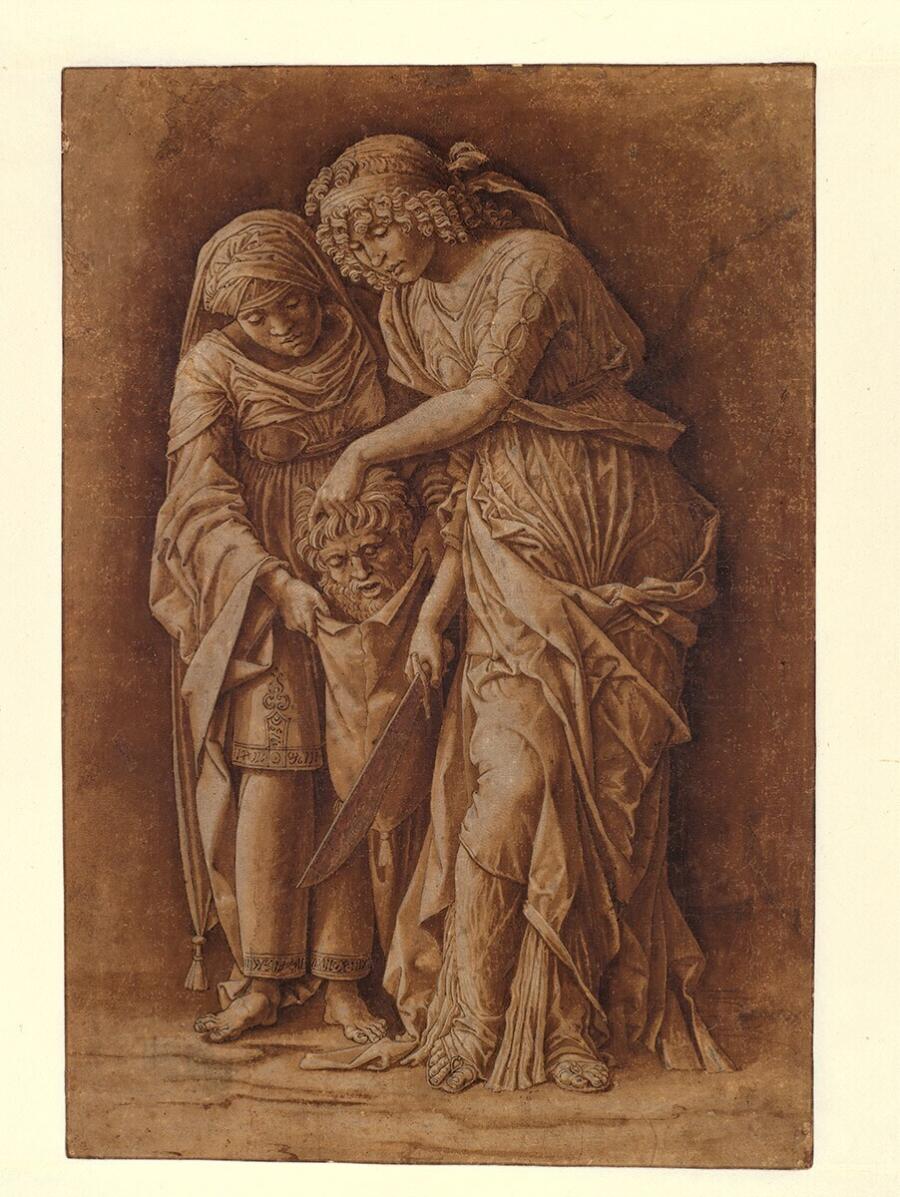Specifications
| Title | Judith and her Maid with the Head of Holofernes |
|---|---|
| Material and technique | Pen and brush and brown ink, brown wash, heightened with white |
| Object type |
Drawing
> Two-dimensional object
> Art object
|
| Location | This object is in storage |
| Dimensions |
Height 339 mm Width 233 mm |
|---|---|
| Artists |
Copy after:
Andrea Mantegna
Maker: Anoniem |
| Accession number | I 488 (PK) |
| Credits | Loan Stichting Museum Boijmans Van Beuningen (former Koenigs collection), 1940 |
| Department | Drawings & Prints |
| Acquisition date | 1940 |
| Creation date | in circa 1495-1500 |
| Inscriptions | 'H 13 1/4 dm / B 9 dm / Andrea Mantegna. fecit. 1491 / gebooren Mantua A.1451 / gestorven A. 1517- / Leerling van Jaques Squartione' (verso, bottom left, pen and brown ink) |
| Collector | Collector / Franz Koenigs |
| Mark | C. Ploos van Amstel? (L.3002-3004?); F.W. Koenigs (L.1023a) |
| Provenance | Art dealer Julius W. Böhler (1883-1966), Lucerne; Franz W. Koenigs (1881-1941, L.1023a), Haarlem, acquired in 1929 (Andrea Mantegna); D.G. van Beuningen (1877-1955), Rotterdam, acquired with the Koenigs Collection in 1940 and donated to Stichting Museum Boijmans Van Beuningen |
| Exhibitions | London 1930, no. 711 (Mantegna) / Londen 1930a, no. 156 (not Mantegna) / London 1930b, nr. 758 (not Mantegna); Paris 1935, no. 594 (Mantegna); Groningen 1949, no. 7; Paris 1952, no. 5; Rotterdam 1952, no. 85; Rotterdam (Rondom Raphael) 1997; Rotterdam 2008 (Erasmus), no. 91; Rotterdam 2010-2011 (coll 2 kw 9); Rotterdam (Rondom Fra B.) 2016 |
| Internal exhibitions |
Tekeningen uit eigen bezit, 1400-1800 (1952) Erasmus in beeld (2008) De Collectie Twee - wissel IX, Prenten & Tekeningen (2011) Rondom Fra Bartolommeo (2016) |
| Research |
Show research Italian Drawings 1400-1600 |
| Literature | Becker 1922, p. 11, pl. 29 (Mantegna); London 1930, no. 711; London 1930a, no. 156, pl. 135; Londen 1930b, no. 758 and under no. 187 (not Mantegna); Paris 1935, no. 594 (Mantegna); Groningen 1949, no. 7; Paris 1952, no. 5; Haverkamp Begemann 1952, no. 85; Shapley 1968, p. 25, under no. K 325; Washington 1973, p. 386, n. 1, under no. 148; Ragghianti Collobi 1974, vol. 1, p. 84; Kaufmann 1976, pp. 19-21, fig. 3; Mielke/Winner 1977, under no. 6; Shapley 1979, vol. 1, under no. 289; London/New York 1992, under nos. 140 and 143; Jaffé 1994, under no. 921; Kaplan 2005, pp. 141, 145; Rotterdam 2008 (Erasmus), pp. 182-183 and no. 91, ill. |
| Material | |
| Object | |
| Technique |
Highlight
> Painting technique
> Technique
> Material and technique
|
| Geographical origin | Italy > Southern Europe > Europe |
Do you have corrections or additional information about this work? Please, send us a message























